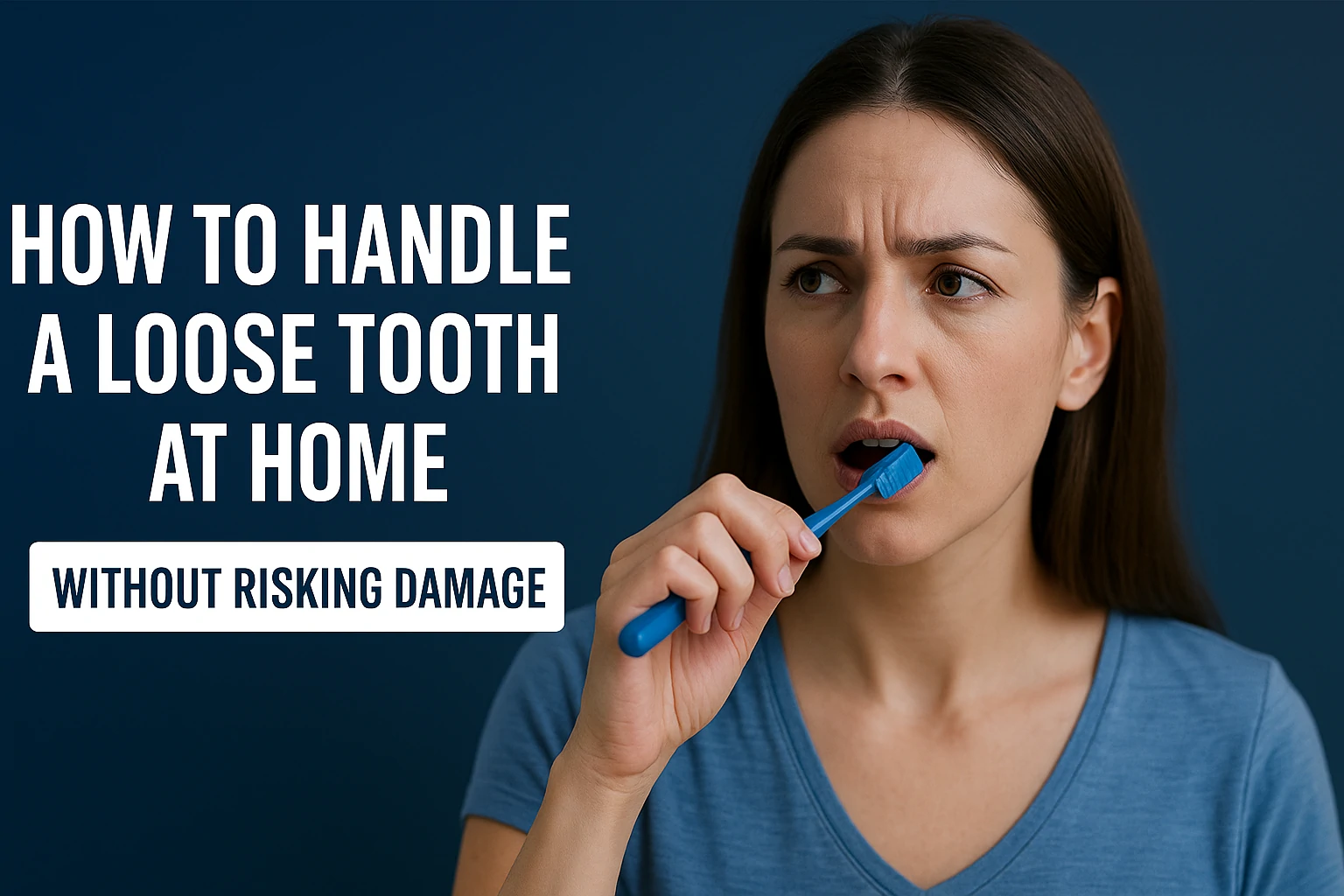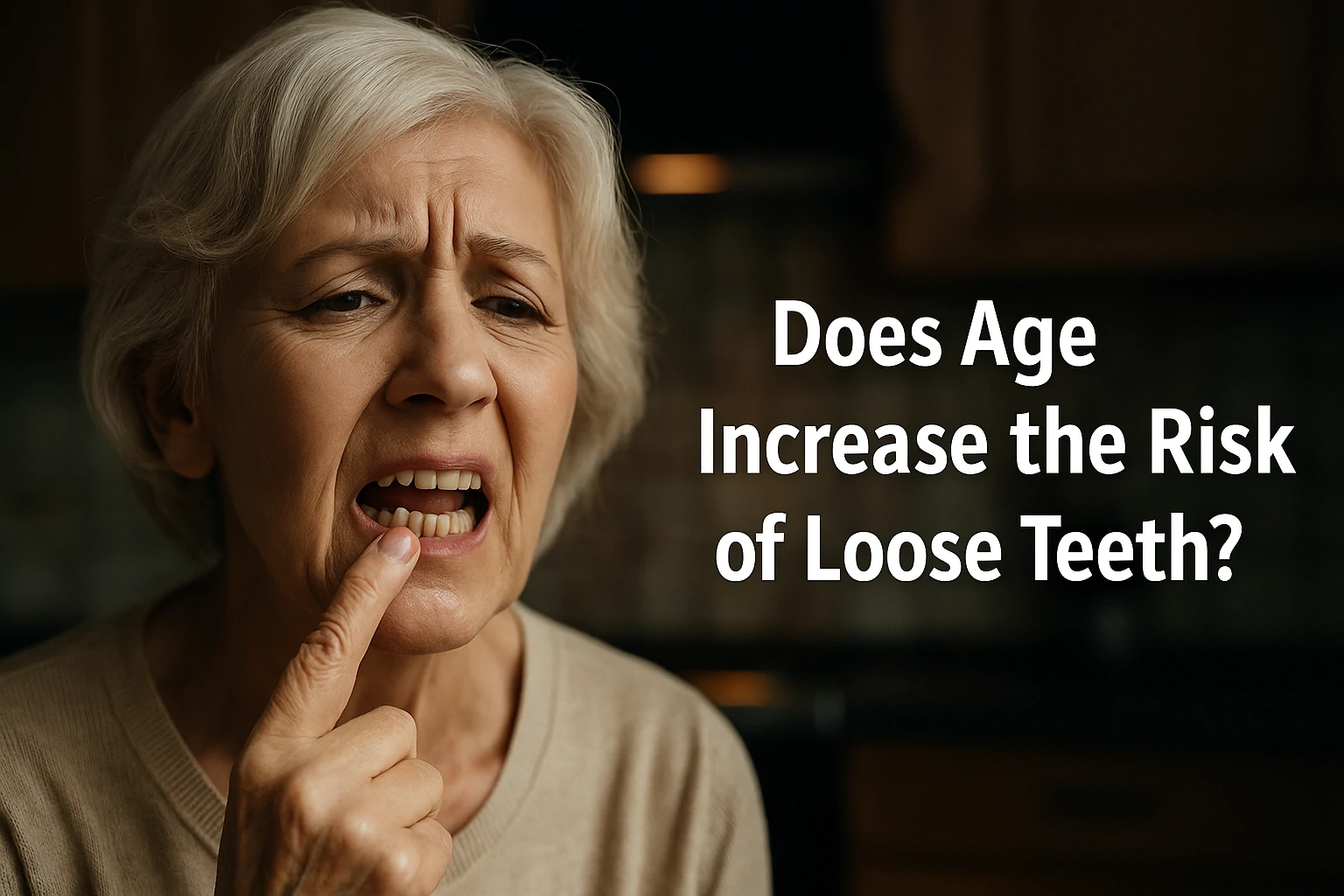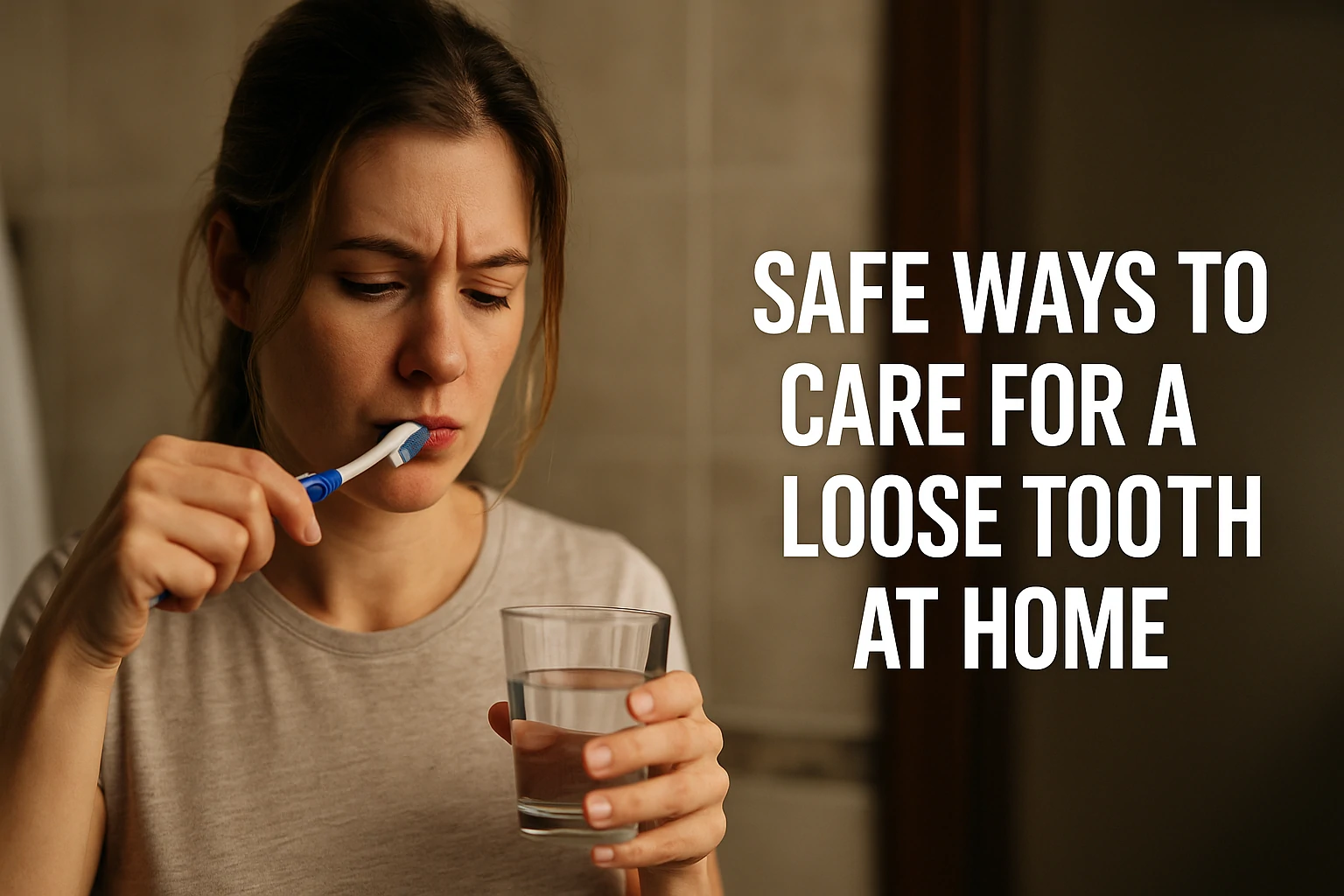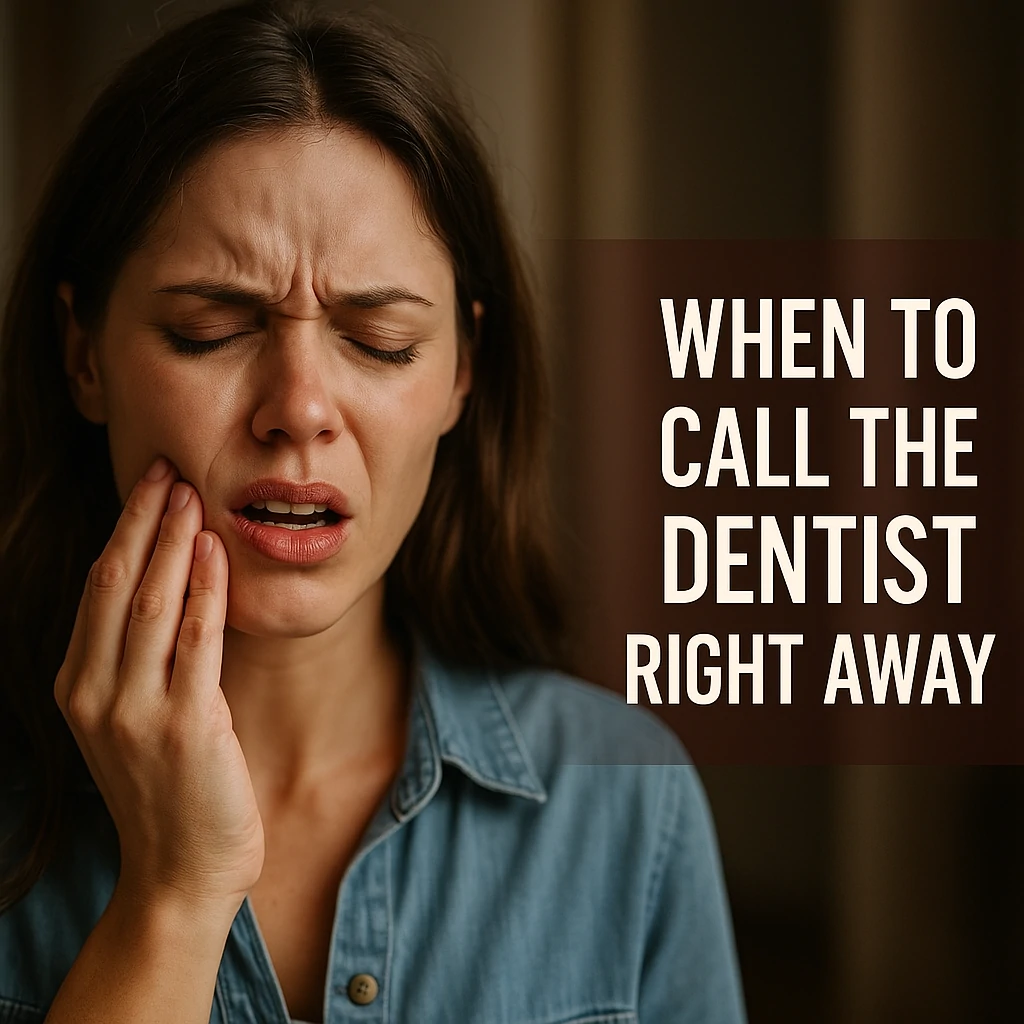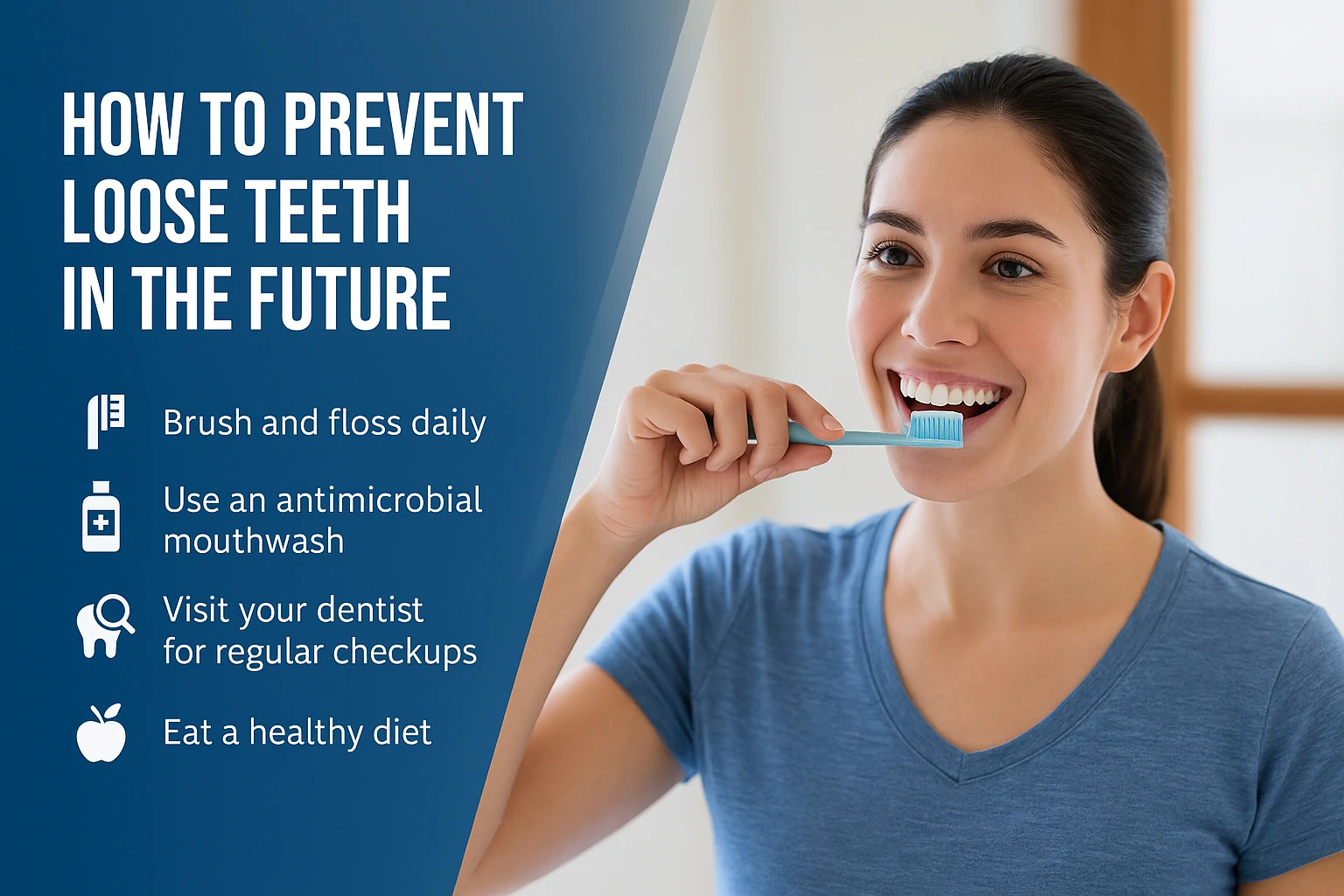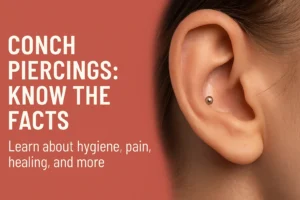A loose tooth can feel scary. It often shows up without warning. Many adults feel nervous when they notice one. Some fear they may lose the tooth. Others just want relief from pain or pressure. A loose tooth does not always mean the worst. In many cases, it points to a deeper issue that needs quick care.
Loose teeth in adults happen for many reasons. It could be injury, gum trouble, or natural wear. Kids lose teeth as they grow, but adults should not. That is why early action matters. Some safe steps at home can help. But a dentist may still be needed. Not all home tips are safe. The wrong move could make it worse.
This guide explains how to care for a loose tooth. It gives safe steps to protect the area and ease the pain. You will also learn when to see a dentist. These tips focus on real care, not tricks or myths. Your health comes first in every step.
You do not need fear. You need facts. When you understand the causes and smart choices, you take control. This guide will show you how to protect your teeth the safe way.
What Causes a Tooth to Become Loose?
A loose tooth in adults does not happen without reason. There is always a cause. Some are easy to manage. Others need fast dental care. Knowing the cause helps you take the right steps. Below are the most common reasons teeth come loose.
How Gum Disease Loosens Teeth
This is the number one reason adults lose tooth support. It starts with plaque. That sticky film builds up on your teeth each day. If you do not clean it, it turns into tartar. Tartar collects below the gumline and feeds bacteria. This creates swelling, pain, and infection.
As the infection spreads, your gums pull back. Bone starts to wear away. When bone shrinks, teeth lose their base. They begin to move. In early stages, this condition is called gingivitis. It causes bleeding and swollen gums. If caught early, a deep dental cleaning may stop it. If ignored, it gets worse and can lead to tooth loss.
Many adults live with early gum disease and do not know it. Bleeding gums, bad breath, or a foul taste may be early signs. Some people notice red, swollen gums or teeth that feel slightly loose.
As the disease spreads, tissue and bone break down. Teeth shift more and feel weak. You may not feel pain right away. But the danger is real. Once the bone is gone, it does not come back easily.
The good news is gum disease can be managed. A dentist may recommend deep cleaning, root planing, or even surgery. The earlier you treat it, the more likely you are to save your teeth.
Injury or Trauma
A strong hit to the face can loosen a tooth fast. This often happens during sports, car accidents, or falls. Even biting into something hard like ice or a bone can cause damage. The root or ligament holding the tooth may tear. In some cases, the tooth gets pushed out of its socket.
Sometimes you feel the pain right away. Other times, it creeps in later. If the tooth stays loose, it may not heal without help. A dentist might use a splint to keep it stable. That gives the area time to heal. Waiting too long after injury can make things worse.
Tooth Grinding (Bruxism)
Many people grind their teeth in their sleep. They do not know until damage begins. Grinding puts pressure on your teeth and gums. It wears down the bone and fibers that hold your teeth in place. Over time, this causes shifting and looseness.
You may wake up with jaw pain or headaches. You might also notice wear on your teeth. A night guard can help reduce damage. Your dentist can check your bite and recommend the best way to protect your teeth.
Can Stress Cause Loose Teeth?
Stress can affect your whole mouth. People often clench their jaw or grind during stress. Both actions press down hard on teeth. This weakens the bones and tissues that hold them in place.
Stress also lowers your body’s ability to heal. If you already have early gum disease, stress may make it worse. You might notice sore teeth, jaw pain, or gum pressure. A soft night guard and stress relief can protect your mouth. Breathing exercises, sleep, and regular meals help reduce the risk.
Poor Dental Hygiene
Skipping your daily care gives germs time to grow. Bacteria eat food left between your teeth. They produce acids that break down your enamel and gums. As gums pull away, teeth become loose.
Plaque can harden into tartar in just one or two days. Once that happens, a toothbrush will not fix it. You will need a dentist to clean it out. Good brushing, flossing, and rinsing help stop this from happening. Daily care is the best step to avoid tooth loss.
Hormonal Changes
Hormones affect the body in many ways, including gum health. Women may notice changes during pregnancy, menstruation, or menopause. The gums may swell, bleed, or feel sore. This makes it easier for bacteria to build up.
As bone mass drops and tissue softens, teeth may feel loose. These changes can happen slowly. If you notice gaps or shifting, tell your dentist. With regular care, you can avoid damage. Dentists may suggest more cleanings or special mouth rinses during these stages.
Does Age Increase the Risk of Loose Teeth?
Yes, age affects your teeth. As people get older, bones in the body lose strength. The jawbone is no different. If the bone weakens, teeth may not stay firm. Gums can shrink or move back as you age. This makes it easier for teeth to shift or feel loose.
Older adults often use medicine that dries out the mouth. Without enough saliva, teeth and gums lose protection. Dry gums can get sore or weak. Bacteria grow faster in a dry mouth, which puts teeth at risk. If the bone or gums break down, teeth may start to move.
Healing also takes longer as you age. Small dental problems can grow quickly if you do not act soon. Good habits help. Brush twice each day. Floss once a day. Visit your dentist often for cleanings and checkups. Eat foods with calcium and vitamins to keep bones strong.
Health Conditions and Lifestyle Factors
Certain health problems raise the chance of loose teeth. Diabetes makes healing slow. Gums may get weak and infected more often. High blood sugar helps germs grow in the mouth.
Smoking is also a risk. It cuts off blood flow to the gums and slows healing. People who smoke usually have more gum trouble than people who do not.
Bone diseases such as osteoporosis thin out the jaw. A weak jaw cannot support teeth well. This can cause teeth to loosen over time. Every person is different. Always tell your dentist about your health.
Fixing health issues early gives you the best chance to keep your teeth steady and strong.
Is It Safe to Treat a Loose Tooth at Home?
Some loose teeth can improve with home care. This only applies when the tooth moves slightly and you do not feel strong pain. If your gums look healthy and there is no swelling, you may try safe steps at home. Do not treat the tooth like it will heal fully without help. Home care does not solve the root cause. It only gives relief for a short time.
Start with gentle brushing. Use a soft brush and avoid pressing too hard near the loose tooth. Rinse your mouth with warm salt water. This helps clean the area and reduces minor swelling. Choose soft food and chew on the opposite side. Rest the tooth and give it a chance to stay in place.
Do not pull the tooth. Do not twist it. Avoid using glue or any tool to hold it. These methods can damage the root or cause infection. A night guard can help if you grind your teeth in your sleep. You can buy one or ask your dentist for a custom fit.
Stay alert to changes. If the tooth gets looser or starts to hurt, stop home care and contact a dentist. A tooth may seem stable but still have hidden issues below the gumline. Pain, swelling, or bleeding means the problem needs expert care. Acting early may save the tooth.
You can try safe steps at home for a short time. But you must see a dentist if the problem stays. Only a dentist can fix what you cannot see. Never wait too long. The risk of damage grows with time.
You can also explore the Best 10 Natural Ways to Care for Your Teeth at Home to find more simple tips that support healthy gums and stronger teeth.
Loose Tooth After Dental Work – What Should You Do?
Sometimes a tooth feels loose after a filling or cleaning. This can happen if the gum is sore or if the tooth had deep work. In most cases, this feeling goes away in a few days. But if the movement stays or hurts, call your dentist.
Do not wait or guess. The work may have changed how your teeth touch. A small fix may solve the problem.
Always speak up if something feels off after treatment.
Safe Ways to Care for a Loose Tooth at Home
A loose tooth does not always need emergency care. In some cases, you can protect it with simple steps at home. These methods help reduce pressure, ease pain, and keep the area clean. They will not reverse the root cause, but they may keep the tooth from getting worse until you see a dentist.
Start with gentle care. Brush your teeth using a soft toothbrush. Do not scrub the loose tooth. Go slow and keep your touch light. You can rinse your mouth with warm salt water two or three times a day. This mix helps clean the area and remove bacteria. It also soothes swollen gums.
Avoid hard or sticky foods. Eat soft meals like soup, yogurt, mashed vegetables, eggs, or oatmeal. Chew on the side of your mouth where the teeth are stable. This helps reduce the chance of more movement or pain.
Keep your tongue and fingers away from the loose tooth. Do not press on it or try to test how much it moves. That only adds more stress to the area. Let it stay still and rest.
If you grind your teeth at night, use a mouthguard. Many stores sell soft guards you can boil and fit at home. A dentist can also make a custom one. A guard keeps your upper and lower teeth from pressing together. This reduces pressure and helps protect the tooth.
Cold packs help with soreness. You can hold one against the outside of your cheek where the loose tooth is. Do this for about 15 minutes at a time. If the pain feels stronger, you may take over-the-counter pain relief. Follow the instructions and do not overuse any pills.
Your diet also matters. Choose foods rich in calcium and vitamin C. Oranges, cheese, yogurt, spinach, and almonds help keep your gums and bones strong. A healthy mouth heals faster.
Some people try clove oil. It may ease pain for a short time. Dip a cotton swab in a small amount and touch it gently to the gum near the sore tooth. Use it with care. If your gums react or feel worse, stop right away.
These home steps do not fix deep dental issues. They are only support until you can visit a dentist. A loose tooth often needs more than rest. Always check the cause and follow expert advice.
Foods to Avoid When a Tooth Feels Loose
Hard or sticky foods can make things worse. Chips, nuts, candy, or crusty bread press on the loose tooth. They can break the root or shift the tooth more. Sticky treats may pull on it or get stuck.
Even fruits like apples can be too tough. Eat soft meals instead. Choose soup, mashed potatoes, scrambled eggs, or soft fruit like bananas. Let the tooth rest. Give it a better chance to stay in place.
When to Call the Dentist Right Away
A loose tooth can sometimes be cared for at home, but there are clear signs that mean you must see a dentist without delay. If the tooth moves a lot or feels like it might fall out, this shows the support around it has become weak. A dentist can check the bone and ligaments and tell you if the tooth can be saved.
Bleeding, pus, or a bad taste in the mouth point to infection. This is not something that will go away with home care. Infection can reach deep inside the gums and even spread to the jawbone or bloodstream. If you see these signs, book a dental visit as soon as possible.
Red or swollen gums signal active disease. This often means bacteria have built up under the gumline. Pain that keeps you from sleeping or eating also signals a serious problem. Dark spots, cracks, or changes in the color of the tooth may mean nerve damage or decay inside the tooth.
Receding gums expose the root of the tooth. Once the root is exposed, it becomes easier for bacteria to enter and harder for the tooth to stay firm. A dentist can offer deep cleaning, splinting, or other treatments to stop further damage.
Do not assume improvement means safety. A loose tooth might seem better one day but still have hidden damage beneath the gumline. Acting early protects your health, helps save the tooth, and prevents more costly or invasive treatment later.
Can a Loose Tooth Fall Out on Its Own?
Yes, it can fall out if the damage is serious. A loose tooth that keeps moving may lose all support. This happens more often with gum disease or injury. You may feel the tooth wiggle more each day.
Then one day, it slips out during eating or brushing. This is not safe. It can lead to pain or infection.
If a tooth starts to feel loose, do not wait. Getting help early gives you a better chance to keep it.
Can a Loose Tooth Tighten Again?
A loose tooth can become stable again, but only in certain cases. If the problem started from a light injury or early gum trouble, there is a good chance it can heal. This may happen if the root and bone around the tooth still stay strong. Rest, soft foods, and proper care can help the tissues tighten back up.
Some people grind their teeth in their sleep. This puts pressure on the tooth and causes it to move. If grinding caused the problem, wearing a night guard and avoiding stress may stop more damage. A loose tooth from mild grinding may feel stronger after some time.
But if the bone around the tooth has started to break down, it will not fix itself. Infection in the gums or deep under the tooth means the support is already weak. In these cases, home care will not be enough. You may need deep cleaning, a splint, or other treatment to protect the tooth.
Do not wait and guess. A dentist must check if the tooth can still heal or if it needs help. Getting a clear answer early makes it easier to save your smile.
How a Dentist Treats a Loose Tooth
Dentists have tools and methods to fix loose teeth. One common treatment is deep cleaning. This removes bacteria below the gum line. It gives gums a chance to heal. If the tooth needs support, the dentist may splint it.
This means connecting it to nearby teeth. In some cases, they adjust your bite or give you a guard. If damage is deep, surgery or grafting may help. Each case is different. Your dentist will explain what works best.
What Not to Do with a Loose Tooth
A loose tooth needs care, not guesswork. Some people try quick fixes they see online. This can lead to more harm. Never use glue to hold the tooth in place. It may seal in bacteria or damage the gums. Avoid pulling the tooth out on your own. You could tear the root or cause bleeding that leads to infection.
Do not chew on the tooth. Pressure makes it looser. Even soft chewing can shift it more out of place. If the area hurts, do not wait for it to pass. Pain is a warning. It often means something deeper is wrong.
Stay away from unsafe online tricks. Not all advice is safe just because it sounds easy. Your mouth has nerves, blood flow, and bone that need proper care. One wrong move can damage more than just one tooth.
Play it safe. If something feels wrong, trust your instinct. See a dentist before the problem grows.
Learn why dentists focus on these teeth in Cuspid Teeth and Braces: Why Dentists Focus on Them First, and how it affects tooth stability and alignment.
How to Prevent Loose Teeth in the Future
Good habits keep your teeth strong. Brush your teeth twice every day using a soft-bristle brush. Clean all areas of your mouth, including the back teeth and gumline. Floss once a day to remove food and plaque between your teeth. This helps your gums stay firm.
Use mouthwash that kills germs and freshens breath. This adds extra protection after brushing and flossing. Visit your dentist every six months. Regular checkups catch problems early and keep your mouth healthy.
Stay away from smoking or tobacco. These weaken gums and slow healing. Wear a mouthguard during sports or if you grind your teeth at night. This lowers the risk of injury and damage.
Eat meals that help your bones and gums. Foods rich in calcium and vitamin C make a big difference. Include milk, cheese, oranges, leafy greens, and almonds in your diet. These choices help your mouth stay strong.
The best fix is prevention. Daily care and smart habits protect your teeth before problems begin.
When Splinting May Help
Some dentists use splints. This means they attach the loose tooth to nearby teeth. This holds it in place.
Splints help the tooth stay steady. But this works only in some cases. The dentist will check if it makes sense for you.
Loose Tooth in Kids vs Adults
Kids lose baby teeth. That is normal. Their adult teeth grow later.
Adults should not have loose teeth. It often means something is wrong.
If a child gets a loose tooth from an injury, check with a kid’s dentist.
Always teach children not to pull on loose teeth too early.
Loose Teeth and Gum Health
Healthy gums keep teeth firm. They act like anchors that hold each tooth in place. When gums grow weak, teeth lose support. This makes them shift, loosen, or fall out over time.
Bleeding gums are not normal. Swelling, redness, or pain are signs of early gum trouble. These problems often start small but grow fast without care. Gentle brushing helps remove buildup. Flossing clears food and plaque between teeth. Rinsing with warm salt water helps calm sore gums and clean the mouth.
Your diet plays a role too. Eat foods that support gum health. Pick fruits and vegetables with vitamin C. Add leafy greens, yogurt, and cheese. These help fight inflammation and rebuild strength.
If your gums start to pull back or feel sore, take it seriously. Do not wait for the pain to get worse. Loose teeth often begin with gum damage. The sooner you get help, the better your chance to stop the problem. A dentist can clean deep below the gums and guide you on what to do next. Protecting your gums helps protect your teeth.
Home Remedies That Support Gum Strength

Some home items may help your gums stay healthy. These do not cure deep gum problems, but they can support daily care. Use them along with brushing, flossing, and clean eating.
- Green tea helps reduce swelling. It has antioxidants that fight harmful bacteria in the mouth. Drink it plain without sugar. One or two cups a day can support gum health.
- Aloe vera gel can soothe sore gums. Use pure gel, not flavored or mixed versions. Rub a small amount on the gums. Let it sit for a few minutes, then rinse your mouth.
- Saltwater is simple and useful. Mix half a teaspoon of salt in a glass of warm water. Swish it around your mouth and spit it out. This helps clean the gums and ease mild swelling.
- Coconut oil can help reduce germs. Use one spoonful and swish it around your mouth for ten minutes. Then spit it out and rinse well. This is called oil pulling. It may help remove toxins from the gums.
Try one remedy at a time. Always check for allergic reactions. Stop using any item that causes burning or discomfort. These home steps work best with strong brushing habits and regular dental checkups.
Conclusion: Protect Your Smile the Safe Way
A loose tooth can feel scary, but it does not always lead to loss. You can take simple steps at home to keep it safe. Clean your mouth with care. Eat soft meals that do not stress the tooth. Rest the area and avoid touching it. Ease pain with cold packs or saltwater rinses. Choose methods that protect, not harm.
Do not fall for quick fixes online. Never use glue, string, or sharp tools. These cause more damage and may lead to infection.
The smart choice is to act early. A dentist can find the cause and treat it the right way. You may keep your tooth and avoid bigger problems.
This guide gives you a safe plan. Follow it with care. Stay calm, take action, and trust real help. Your smile matters. Keep it strong. Keep it healthy.
Explore smart dental tools in Nerovet AI Dentistry: Full User Guide, Pros and Cons, and Safety Facts to see how tech supports gum and tooth care.
Frequently Asked Questions
| Question | Answer |
|---|---|
| What should I do if my tooth feels loose? | The best first step is to avoid touching the tooth. Keep your mouth clean, eat soft foods, and call your dentist for advice as soon as you can. |
| Can I tighten a loose tooth at home? | Simple home care may help in mild cases, but only a dentist can treat the cause. Support the tooth, avoid hard foods, and book a dental checkup right away. |
| Is a loose tooth always a dental emergency? | Mild movement may not be urgent, but strong movement, pain, or bleeding calls for a dental visit as soon as possible. Early care protects your tooth. |
| Will my tooth fall out if it feels loose? | The risk depends on the cause. Gum disease, injury, or bone loss can lead to tooth loss if you wait too long for treatment. |
| Does gum disease cause loose teeth? | Gum disease is a top reason teeth loosen in adults. Infection breaks down bone and tissue, leaving teeth less stable. |
| Can kids get loose teeth from gum disease? | Kids often have loose teeth from normal growth, but red, swollen gums in a child should still be checked by a dentist. |
| What foods are safest to eat with a loose tooth? | Soft foods such as yogurt, soup, scrambled eggs, and ripe bananas cause less pressure and help protect the loose tooth. |
| Will clove oil help with pain from a loose tooth? | Clove oil can ease mild pain for a short time. Always use a small amount and stop if you feel burning or discomfort. |
| How soon should I see a dentist for a loose tooth? | The sooner you see a dentist, the better your chance to keep the tooth. Waiting makes treatment harder and may lead to more problems. |
Disclaimer: This article offers general oral care tips and is not a substitute for professional dental advice. Always consult your dentist before trying any home remedies.

